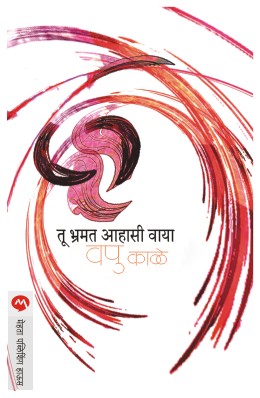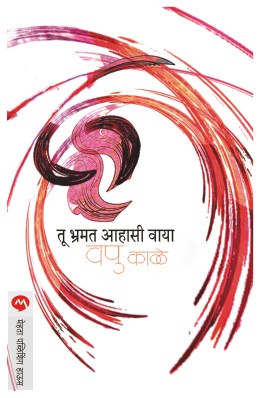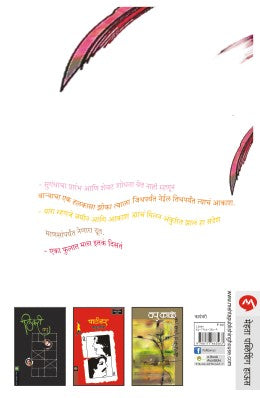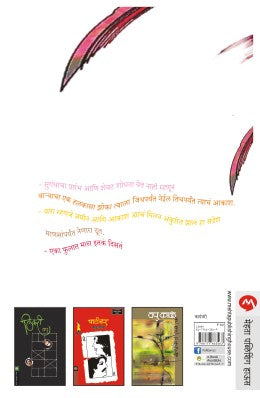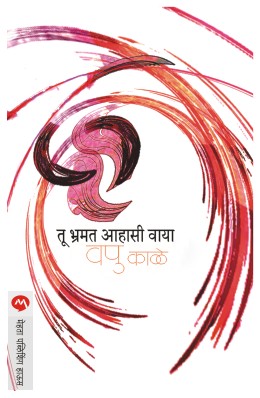TU BHRAMAT AAHASI VAYA
TU BHRAMAT AAHASI VAYA is backordered and will ship as soon as it is back in stock.
Couldn't load pickup availability
Genuine Products Guarantee
Genuine Products Guarantee
We guarantee 100% genuine products, and if proven otherwise, we will compensate you with 10 times the product's cost.
Delivery and Shipping
Delivery and Shipping
Products are generally ready for dispatch within 1 day and typically reach you in 3 to 5 days.
-
ISBN: 9788177663563
-
Edition: 15
-
Publishing Year: December 1992
-
Pages: 96
-
Language: Marathi
-
Category: Fiction
-
Binding: Paperback
-
Publisher: Mehta Publishing House
Book Description:
This book can be said to be the fruit of Va Pu's penance of the last 40 years. He seems to come to a conclusion of all his findings about the human mind. Rooted in the teachings of the Dnyaneshwari, it is not a typical love story; rather, it reveals a very firm mindset. The story revolves around a circle that continuously moves around the center point, depicting a love that knows no selfishness, no rights. It makes us realize for the first time that just as there is immense happiness beyond happiness, there is also immense happiness beyond sorrow, pain, and ache.
The main character, Sayara, is a Muslim by birth, but she craves the perfection of Hinduism. She is of a secular mind and neutral about herself. Despite not asking for anything, she receives beyond imagination while others with wealth continue to lose. The narration, characters, images, and entire plot are so harmoniously blended that once the novel is completed, we feel the waves of sacrifice and immense love throughout our body and soul.
Mandlik, Sayara’s teacher, raises the question: does he really exist, or is he merely an imagination of her mind? Sometimes, the presence plays the game better than analysis. Sayara’s character lingers in the mind even after completing the novel, captivating the reader. The universal truth in Va Pu's writing is that his words have the potential to capture the reader's heart. In this work, his words transcend that potential. He reflects, "What do I see in one flower? I cannot find the beginning or the end of the fragrance that originates from a flower. The gentle breeze carries it to far distances; wind is the messenger announcing the unification of the land and the sky. I see this all in one flower."

